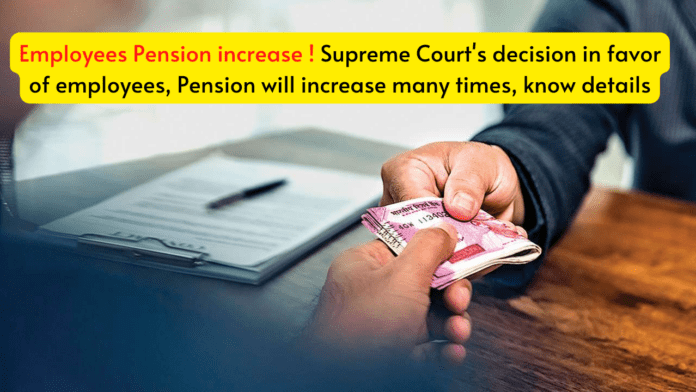Pension is the biggest trust for any employed person to secure his future. Now the Supreme Court has given a big decision regarding pension. Which has come in favor of the employees. Under which the pension of the employees will increase manifold.
Pension is the biggest trust for any employed person to secure his future. Now the Supreme Court has given a big decision regarding pension. After the implementation of this decision, the pension of private sector employees will increase manifold. Let us understand about this decision.
Actually, the Employees’ Provident Fund Organization (EPFO) of the Government of India had filed a petition in the Supreme Court. This petition was against the decision of the Kerala High Court. The Kerala High Court had ordered to give pension to private sector employees according to their full salary. This order has been upheld by the Supreme Court. At present, pension is calculated by EPFO on the basis of a limit of basic pay of Rs 15,000.
After the order of the Supreme Court, now pension will have to be given according to the full salary. In such a situation, the pension of the employees will increase manifold. The only disadvantage in this is that the pension will increase, but the fund of the pension fund will decrease. However, if the pension will increase so much with the new rule, then that gap will be filled.
Explain that 12 percent of the basic salary of the employees goes to PF and 12 percent has to be deposited by the company in its name. Of the company’s 12 per cent stake, 8.33 per cent (not more than Rs 1250 per month) goes to the pension fund and the remaining 3.66 per cent to PF.
The Central Government started the Employees Pension Scheme (EPS) in 1995. Under this, the company made 8.33 per cent of the employee’s basic salary up to Rs 6,500 (maximum Rs 1,250 per month).
In EPF or EPS, it is mandatory to deposit contribution of such employees, whose basic salary + DA is Rs.15000 or more. Employees who get more basic salary than this have the option to adopt or leave EPF and EPS.


